How to Tie Fundraising Dollars to Impact

Most nonprofits believe fundraising drives impact, but do not realize that impact also drives fundraising.
Research by the Case Foundation has found that millennials, especially, are likely to stop donating if they do not clearly understand the impact of their gift.
To learn how nonprofits can showcase their programs’ results while fundraising—and subsequently boost donations—we sat with Classy’s very own impact communications guru, Progress product manager Shanna Birky.
Shanna shares helpful tips on how your organization can tie outcomes to fundraising dollars at the campaign level to raise more money for your mission.
But in order to communicate your impact, you first need to understand what “impact” really means.
Use a Logic Model
As described by University of Pennsylvania professors Ian C. MacMillan and James D. Thompson, your work to achieve your mission can be categorized into what’s called a “logic model,” which consists of the following:
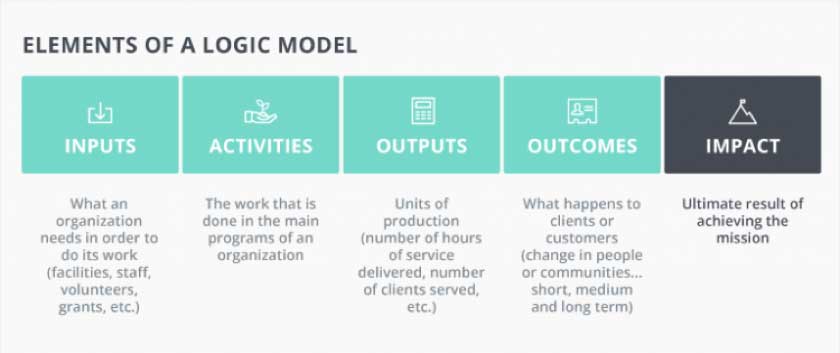
Elements of a logic model by professors Ian C. MacMillan and James D. Thompson
When it comes to defining results, it’s important to understand the difference between an output and outcome as there are certain times you’ll want to place emphasis on one over the other in your messaging.
Consider this example of a logic model:
- Say your input is $40,000, from a recent fundraising campaign.
- And your organization’s main activity is well building.
- The output of the input and activity is one well.
- The outcome of your output is clean water, less exposure to harmful bacteria, saved time, higher school attendance rates, etc.
- The impact of these outcomes is improved community health, education, etc.
While outcomes and impact are your organization’s ultimate goals, the tangible outputs that achieve the larger mission (e.g., wells) are often what potential donors can most relate to. Therefore, you’ll want to refer to outputs in key places to incentivize gifts.
Quick Exercise
Use this logic model to break down your work. Make sure you can clearly articulate each area so that when you need to leverage different sections in your campaign messaging, you’re ready to hit the ground running.
Tie Donation Amounts to Specific Outputs
To motivate your donors to give, show them what their donations can achieve through specific examples. Show them that $50 could help you purchase books for a student in your literacy program, or that $200 supplies the equipment needed to organize a beach clean-up.
In their recent crowdfunding campaign on Classy, Alliance of Hope connected different levels of support to specific amounts of time provided on their forum, a lifeline for those who have lost loved ones to suicide. A donor could easily see that if they gave $35, their contribution would be enough to power Alliance of Hope’s help forum for six hours.
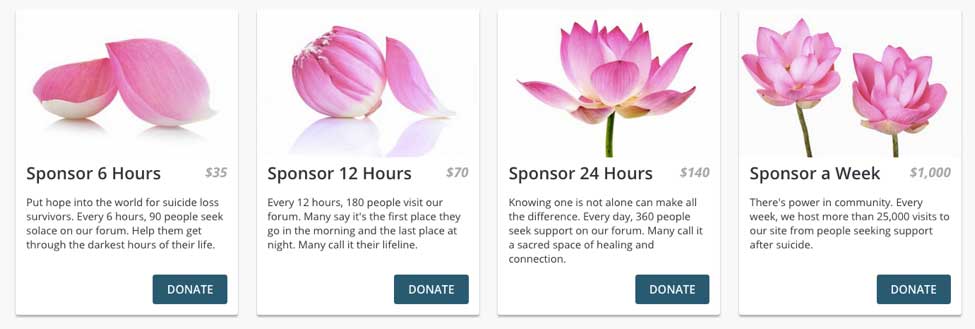
The conversations and resources delivered on the forum are outputs that help Alliance of Hope achieve the outcomes associated with their mission.
Get Creative
If your organization struggles to illustrate specific outputs through its campaign, you can take a leaf out of Convoy of Hope’s book. For their campaign, Zendaya, the language in each Impact Block calls out larger ideas that are less tangible than simple outputs like “pencils” or “schools.” Potential supporters can still choose concepts that they resonate with.
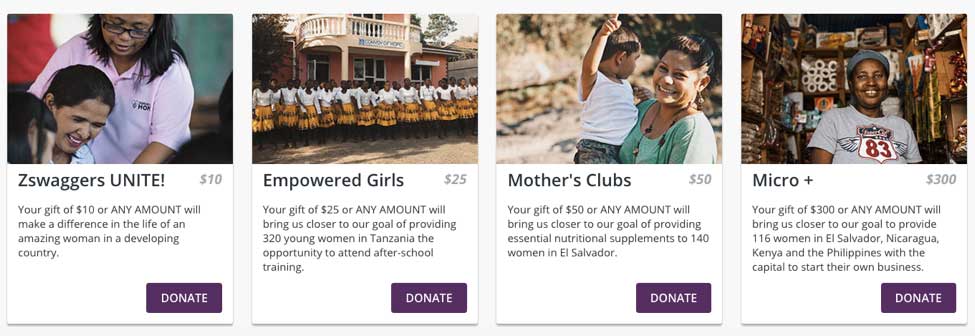
However, as important as they are, outputs are not the only thing you need to highlight in your campaign messaging.
“We have to remember that donating has been rooted in emotion,” says Shanna, “and replacing the story with facts is not the answer to increasing impact transparency.”
If it’s important to provide impact examples, how then can you also ensure you’re painting the full picture—and in an emotional way? In essence, you must answer the question, ‘how can I make my campaign both qualitative and quantitative?”’
Build a Narrative
One way to ensure your campaign remains rooted in emotion is to build a narrative that the user experiences as they move through the donation process. When you tell a story, it’s more likely that visitors will invest emotionally into your campaign and want to learn more.
Text, images, and video are all great tools for setting the stage. When it comes to holding your visitors’ attention, be sure to remember the identifiable victim effect—your potential supporters are more apt to resonate with the story of an individual’s plight than that of a larger group. Of course, this doesn’t mean you can’t speak to larger statistics. It simply indicates that people connect on an individual basis—when you tell one person’s story, you create a bridge that connects the reader to the larger group’s experiences.
Don’t forget to make sure the larger goal or outcome that you’re shooting for is clearly communicated on your campaign page as well. On Classy, one way to get your message across is to outline your campaign’s larger goals in a customizable Content Block.
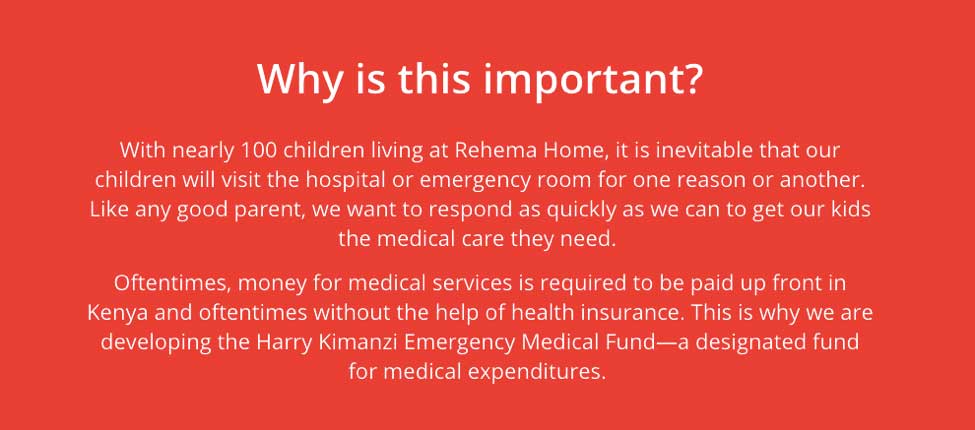
In this Content Block, Rehema Home provides background information for their campaign, the Harry Kimanzi Emergency Fund
While your narrative can live on your campaign page, you should also weave it throughout the donor’s entire giving experience. In order to ensure your storytelling succeeds through email, however, you have to know which story will appeal most to your different supporters.
Tailored Communications
The more information you gather on your supporters, the more you can cater the giving experience to their interests. And when you cater the experience to their interests, your messaging is more likely to resonate and incite action.
An example of information gathering that can boost your campaign’s success is the use of Custom Questions on your Classy campaign. Ask your supporters which Impact Block resonates with them the most in order to get a sense of where their interests lie. Once you have this information, you can use it to tailor your communications to this supporter.
If your supporter chose to donate books for the library at your new school, you can send them updates specifically about the library over the cafeteria. These updates can revolve around the outputs, outcomes, and overall impact of your organization related to that specific area. This engagement strategy will help your donors feel like they’re part of the solution. This clarity and connection will likely generate feelings of satisfaction that can lead to increased donor retention rates.
When you connect fundraising dollars to impact, you make it easier for potential donors to relate to your work and understand how they can make a difference. This clarity incites action and helps you raise more money for your cause.
Interested in learning more about how you can communicate impact on a Classy campaign?
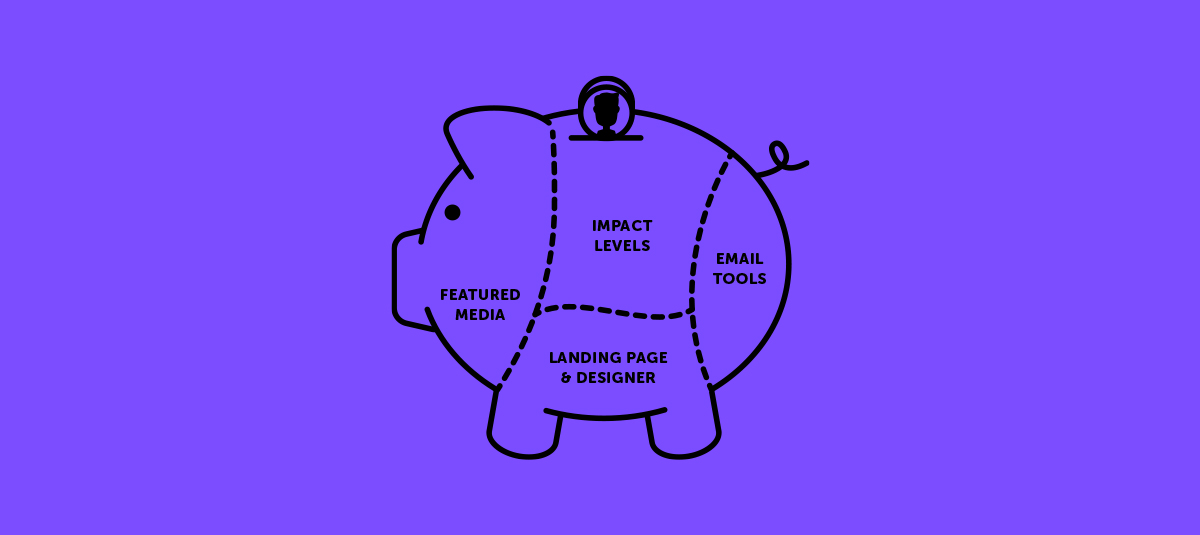
The Anatomy of a Successful Crowdfunding Campaign
Subscribe to the Classy Blog
Get the latest fundraising tips, trends, and ideas in your inbox.
Thank you for subscribing
You signed up for emails from Classy
Request a demo
Learn how top nonprofits use Classy to power their fundraising.



